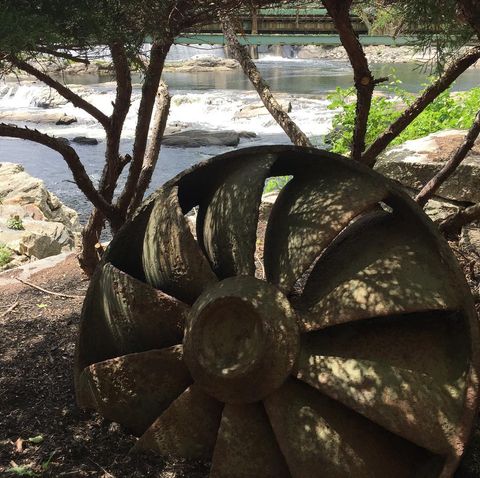
What about the Right Column? The focus from this perspective would be on Contingency in the midst of volatility. This perspective concerns being flexible. We keep options open and allow learning to occur in order to modify the actions taken. An appropriate engagement would involve emphasis on the intentions (goals, vision, values, purposes) associated with the issue being addressed. Which of these intentions should (must) remain constant and which can change depending on the shifting circumstances associated with this issue?
I introduce the metaphor of anchors at this point to address the issue of continuity and change. Originally introduced by Edgar Schein (1978) in describing the nature of careers, the metaphor of anchors can be expanded to help us make sense of this volatility-based polarity. I expand on this metaphor by noting that there are actually two kinds of anchors. The first type of anchor is the so-called Bottom or Ground Anchor. This is the large and very heavy anchor that most of us non-nautical folks envision.
The bottom anchor consists of a shaft with two arms and flukes at one end and a stoke mounted at the other end—or they are slabs of concrete to which a ship is attached when moored. This type of anchor digs into the floor of the sea once the boat begins to move and provides tension on the chains connecting the anchor to the boat. These anchors are meant to be permanent—just as some intentions aligned with a specific issue are meant to remain stationary and are never to be modified (let alone discarded). Commitment is at the forefront.
The second kind of anchor is called a Sea Anchor (also identified as a drift anchor or drogue). It typically is not as heavy as the bottom anchor and is often shaped like a parachute or cone with the larger end pointing in the direction of the boat’s movement. The sea anchor helps to orient the boat into the wind and slows down (but doesn’t prevent) the boat’s drift. The sea anchor is used when the boat is far away from the shoreline and the sea floor is located many fathoms below.
The Sea Anchor contrasts with the ground anchors in that it is intended not to hold a boat in place but rather to align a ship with the wind and slow down its movement in any one direction. The sea anchor provides flexible anchorage in the midst of shifts in tidal action and wind. Those intentions in an organization that operate like sea anchors. It similarly provides alignment and direction for an organization or community as it shifts gradually with changes in the environment surrounding the presentation of a specific issue. Contingency is at the forefront. The polarity is addressed by acknowledging benefits inherent in both the ground (commitment) and sea (contingency) anchor.
The Search for Stability
We look out over our mid-21st Century world and see something that looks more like a stormy sea than terra firma. Miller and Page’s (2007) would suggest our world resembles a rugged landscape. There is no one dominant element (no single presiding mountain); rather there are a host of ridges and valleys. We find no one intention (goal, purpose, desired outcome) standing out as of greater importance than any other intentions Furthermore, as Miller and Page noted, the landscape might be dancing. Priorities are constantly changing.
Download Article













